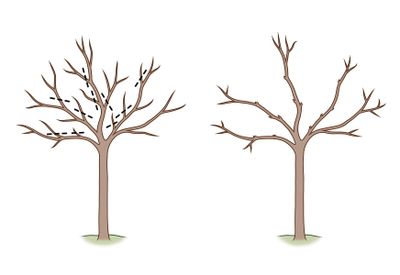What are Thinning Cuts?
Pruning is generally the cutting away of malicious wood to increase airflow and bud formation. It is also used to remove dead wood and remove problem stems and branches. But what are thinning cuts? This is the selective removal of certain branches back to the branch collar to open the canopy but preserve the appearance of the tree. It doesn’t change the overall shape of the tree, but thinning tree branches does increase air circulation and light. This helps prevent certain diseases and infestations and boosts bud and fruit production.
Pruning Equipment for Thinning of Trees/Shrubs
There are a few things to remember before starting on a pruning project. First, choose the right tool.
Thinning cuts in pruning that only remove the smaller terminal wood can often be done with just a pair of hand pruners. Bypass pruners handle slightly smaller wood just under an inch (2.5 cm.) in diameter. Loppers are for broad projects and are not very useful in the thinning of trees. A telescoping pair of extension pruners are made for tree wood removal. Large limbs will require a saw.
Make sure the tools you use are sharp and free of dirt.
How to Employ Thinning Cuts
Thinning tree branches removes the wood to the point of origin. This stimulates very little growth if used in moderation. The process is also called drop-crotching because it takes the wood back to the crotch or ‘V’ where it originated. Hold the pruners at a slight angle and cut just above the parent wood but not into the wood. Make the cut just above a growth or bud node with the angle positioned so any moisture will be directed away from the bud. Choose limbs and stems that are crossing, rubbing, or damaged first. Step back often as you make thinning cuts in pruning to make sure you are getting an open canopy and even interior wood removal. Thinning tree branches can be done annually if necessary.

